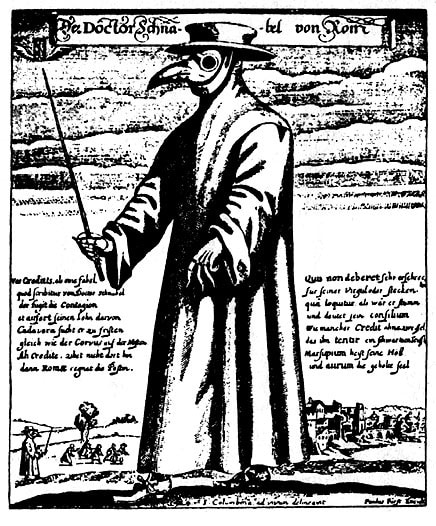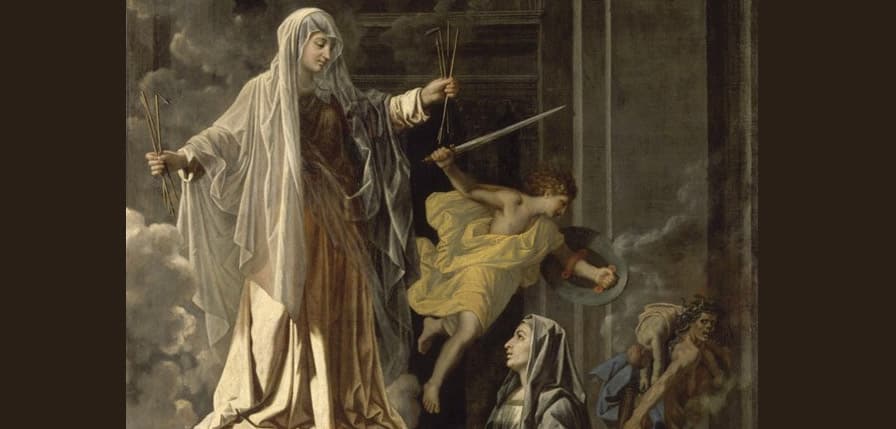This is an eye-catching picture in these epidemic times! In 1657, in a painting entitled Sainte Françoise Romaine announcing in Rome the end of the plague, the painter Nicolas Poussin celebrated the end of the plague. Zoom on his story.
The great plague of 1656 in Italy

In 1656 a part of Italy – especially the Kingdom of Naples – was devastated by a violent plague epidemic: of the 450,000 inhabitants of Naples, 250,000 died of the disease, a death rate of 50 to 60% of the population! Shortly afterwards, the city of Rome was also hit by the epidemic, contaminated by a Neapolitan sailor who stayed nearby. Here, the mortality rate was around 27%.
Faced with this terrible scourge, the people of Rome relied on Saint Francoise Romaine (1384-1440), to whom many cures were attributed. When the epidemic began to decline in 1657, Cardinal Giulio Rospigliosi, the future Pope Clement IX, commissioned Nicolas Poussin to do a painting in homage to the saint.
Nicolas Poussin’s painting
Nicolas Poussin built his canvas around a diagonal. In the lower right, the city of Rome is embodied by a woman kneeling down, praying to Saint Francoise Romaine to put an end to the plague.
The Saint occupies most of the scene, of course. She appears holding in her hands the last arrows, broken, that the plague had in her quiver and signifying that the disease has been defeated.
The plague, for its part, has been personified in the icy features of a frightening cadaverous figure with snakes in his hair, who runs away chased by an archangel who has come to assist the saint. He takes his last two victims with him: one he carries on his shoulder and the other he drags by the arm.
As for the woman lying on the left of the scene, she is a third victim, taking up the posture of Saint Cecilia of Rome.
A canvas that almost disappeared
On the death of Cardinal Giulio Rospigliosi, the painting of Poussin was passed on to his descendants, but at the end of the 18th century the work disappeared. Only two engravings keep the memory of it. It is only in 1998, when the painting reappeared on the art market, that experts identified it and managed to retrace its astonishing journey!
In 1798, the Treaty of Tolentino forced several Roman families to part with part of their artistic heritage, forcing the owners of the painting to dispose of it. Later, it entered the collection of Alexis Le Go, secretary of the Academy of France in Rome, who took it to his residence in the south of France. The work then goes on to inherit it, and loses its identity over time. At the end of the 20th century, its owner sees it only as a “nest of dust” and decides to part with it. He entrusts it to the hands of an expert who then recognizes it as the lost painting of Nicolas Poussin.
The Louvre Museum, through the Société des Amis du Louvre, bought it in 1999 for 45 million euros. Now restored, the painting can be seen in the painting department of the Richelieu wing (2nd floor).







People reacted to this story.
Show comments Hide commentsWell written. I think the personification of the plague is a she instead of a he.